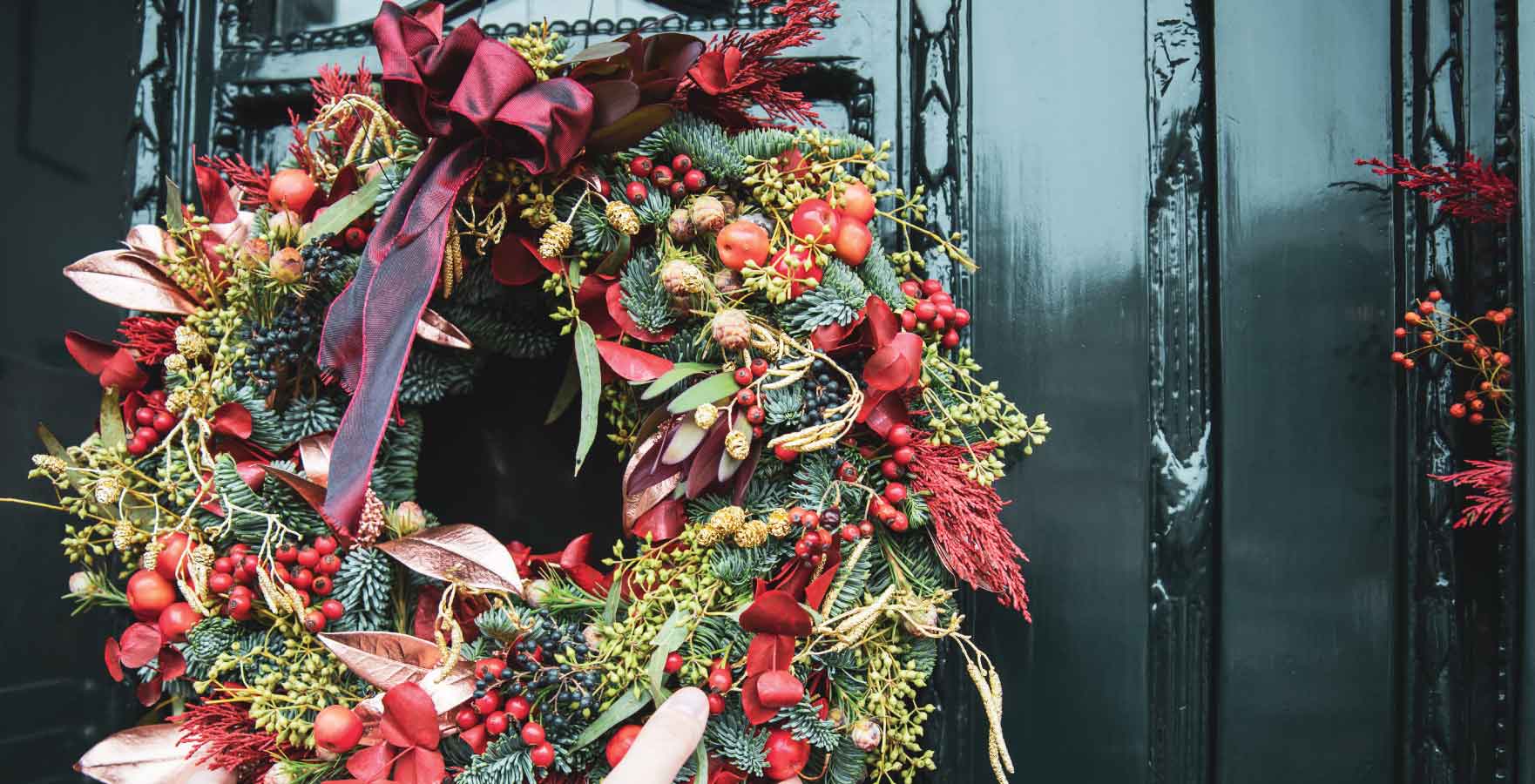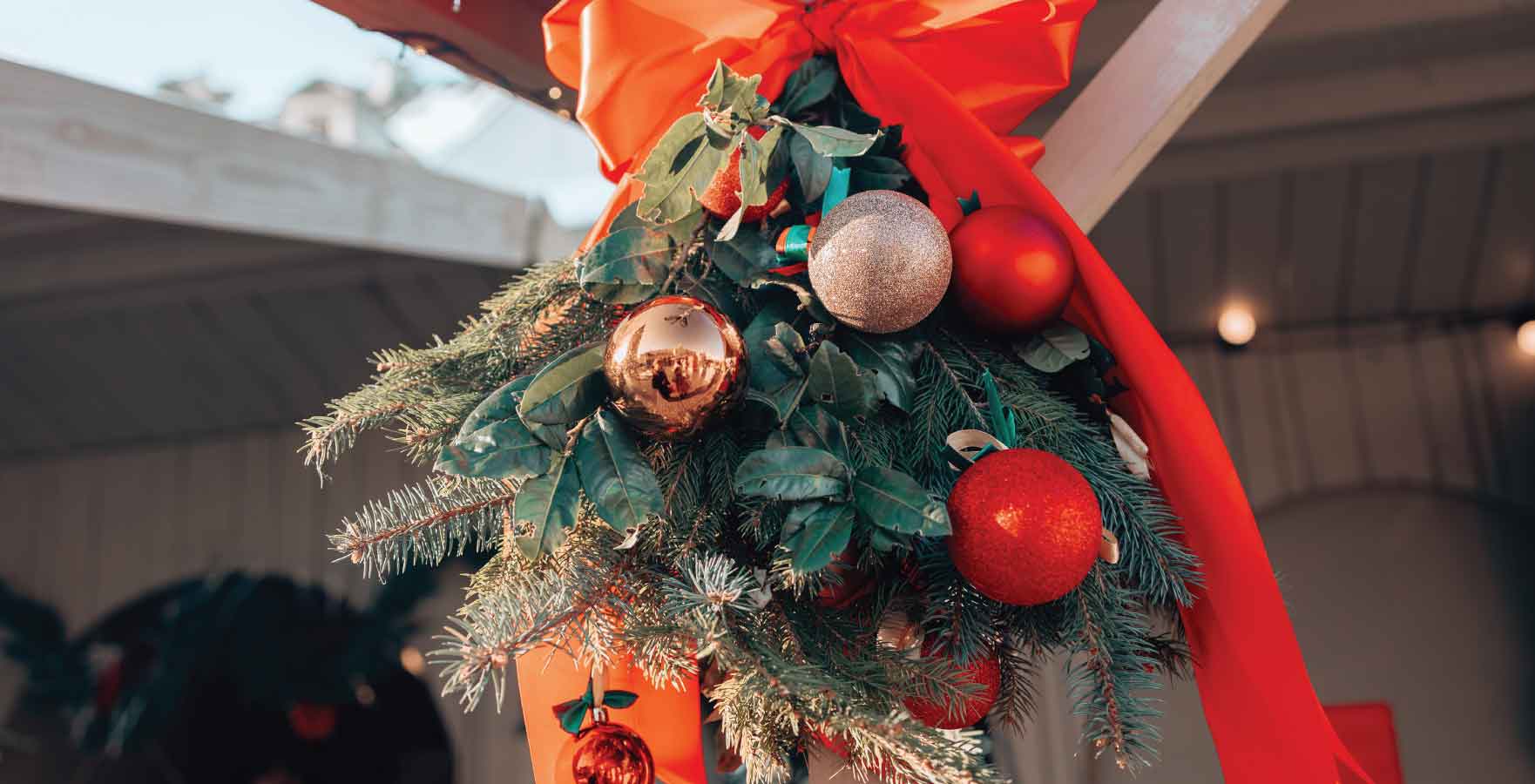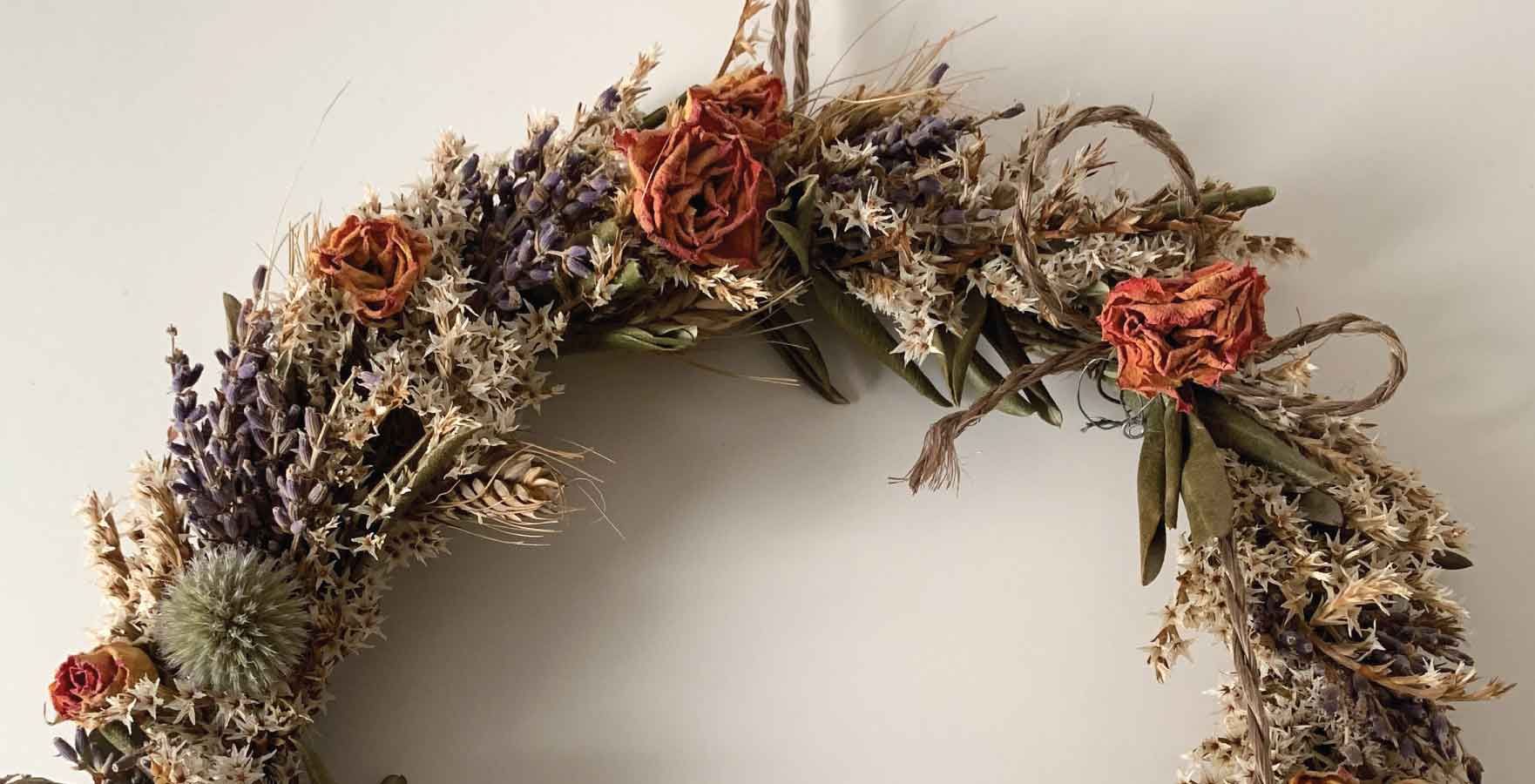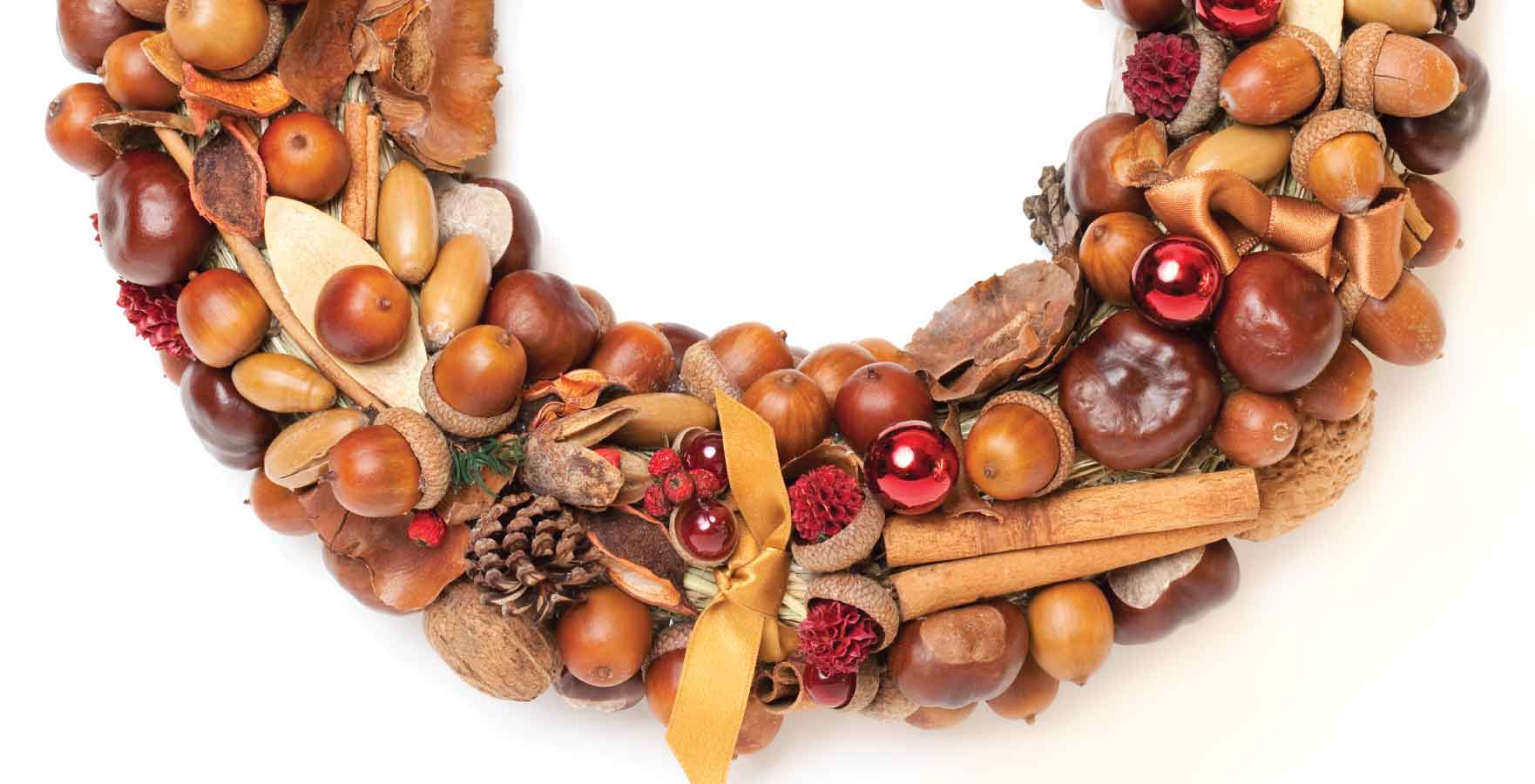
Red berry wreath
A red berry wreath is vibrant and dramatic. If you’re planning to forage your own berries, go for holly, hawthorn, rosehip or spindle. Florists will also sell red berry branches.
You can add berries to a traditional evergreen wreath, but they work particularly well with a twig or stem base, which you can make yourself or buy pre-made. Gather a couple of sprigs and insert them into your wreath base. For a symmetrical look, place your sprigs in the same direction. Start on the outside, adding berries to the top, bottom, left and right of the wreath. Add a stem between each, and continue to add more, working your way forwards, towards the middle of the wreath.
Long stems of berries or pre-bought garlands can also simply be wrapped around the wreath. Ensure that the berries are spread around the wreath, but don’t worry about leaving the twig frame exposed. This creates a rustic, natural finish. If your berries aren’t staying in place, use floristry wire to secure them.

Festive red wreath
Continuing on the red theme, a wreath that incorporates a selection of bright elements can make for an eye-catching display piece. Use a basic foliage wreath as a base and add embellishments, or build your own wreath from scratch.
As well as berries, think crab apples, red ribbons, baubles, dried oranges, candy canes, flowers and leaves. You can use poinsettia bracts (although these will not last long in cold weather), cinnamon or even the papery leaves from a physalis fruit.
Choose a focal point for your decorations and attach your red elements to the wreath in clusters using glue, floristry wire or ribbon. Don’t be afraid to go all out, covering the whole wreath. Where bold reds and oranges are concerned, the more, the merrier.

Christmas swag
A festive swag is a handful of evergreen foliage, often fir or spruce, which is tied together with a ribbon and hung vertically. They are generally shaped like an upside-down bouquet, with a wider centre and tapered ends.
Originally popular in America, the swag tradition has gradually made its way across the pond. Swags are designed to be hung on doors and make great alternatives to wreaths. Swags are a strong contender for the easiest and most affordable Christmas decorations to make. Forage your materials yourself, targeting conifer, fir, spruce or pine foliage. Bunch the stems together and tie them with ribbon, twine or raffia. Any decorations that are suitable for a wreath will work for a swag, so consider adding pinecones, ribbons or sprigs of holly. For an elegant, classic swag, gather mistletoe and combine with eucalyptus leaves.

Dried flower wreath
Evergreens have historically been celebrated for their vibrant green colour, but if you want a sustainable, forage-able wreath that you can continue to use in the future, consider breaking from tradition and using dried flowers and foliage.
You can buy dried flowers for your wreath, or you can dry them yourself. “Flowers like roses, lavender, pansies, hydrangeas and larkspurs lend themselves well to drying,” advises Domoney, “Alternatively, look for plants like pennycress, honesty, eucalyptus, thistles and old man’s beard. Use what you have to hand and choose flowers and foliage with contrasting textures.” To dry the flowers, simply cut them and hang them upside-down in small bundles.
The colours may fade slightly when exposed to sunlight, but a dried flower wreath can last for around four years. If you’ve opted for a more traditional wreath this year, consider drying and recycling some of the materials. They may come in handy for a dried wreath!

Nut and seed wreath
A nut and seed wreath is an autumnal alternative to a classic wreath which also enjoys a longer lifespan.
Making a nut and seed wreath is also a great way to get into the Christmas spirit early. Take a trip to your local woods and look for conkers, acorns, pinecones, chestnuts and walnuts. To give your wreath a more festive aesthetic, collect a few sprigs of evergreen foliage and some red berries.
What do the foliage and symbols in a Christmas wreath mean?
The practice of hanging wreaths at Christmas is thought to have been introduced by Lutherans in 16th-century Germany, who wove cuttings from their Christmas trees into wreaths and hung them as ornaments. This spread to homes and churches, and in the 19th century, wreaths were produced to be hung on the front door. They were known as “welcome rings”, inviting Christmas spirit and good fortune inside.
Different evergreens also hold their own significance. Holly, the Christmas classic, has pagan origins. “The Druids, Celts and Romans are said to have brought holly into their homes, believing it was magical,” says Domoney. “With its shiny evergreen leaves, it’s easy to see why. Holly trees can live for up to 300 years. It was considered to offer protection against lightning strikes, evil spirits and bad luck.”
Holly was later adopted as a Christian metaphor, with the evergreen considered a symbol of life after death. Though it has had numerous adaptations since the carol “Deck the Halls with Boughs of Holly” originated in 16th century Wales and was sung at New Year. Ivy has also been associated with eternal life and was thought to offer protective properties. “Thanks to its tendency to cling, ivy is an enduring symbol of love, friendship and fidelity,” Domoney adds. “Today, it is still commonly found in wedding bouquets.”
Mistletoe has a long association with the festive period and historically has been a symbol of peace. Hung at the threshold of the home, it was thought to ward off evil spirits offering protection to those who lived there.
Kissing boughs introduced in Tudor times would decorate the entrance to homes to welcome guests. This evolved into the tradition of plucking berries from the bough for a kiss from a lady and is most likely where the tradition of kissing under the mistletoe began.